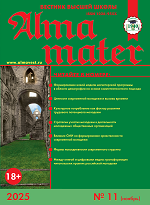UDC 327(5-19)
https://doi.org/10.20339/AM.05-20.117
A.Sh. Mullaev is Doctoral Candidate at Institute of History of Academy of Science of the Republic of Uzbekistan e-mail: azizmullaev88@gmail.com
Presented is the analysis of international program of UNESCO “Silk Road as the Road of Dialogues”, implemented in the years of 1987–1997. This program is widely used in the context of the Great Silk Road, within the framework of which history and culture of the region are widely studied. Results of this project were very useful and effective for the international scientific community. The article analyzes necessity, relevance and principal results of this international scientific program, based on various sources. At the same time, importance of this program in development of science and education in Uzbekistan is shown. Objective of the article is to reveal the significance of the “Silk Road as the Road of Dialogues” program in development of civilization of countries in Central Asia. Also the article uses historical and comparative analysis, as well as interdisciplinary method.
Key words: Central Asia, history, culture, UNESCO, cooperation, development.
References
- The Silk roads project “Integral study of the Silk Roads: Roads of Dialogue”. 1988–997. Paris, 2008. P. 3.
- The Samarkand Declaration on Silk Road Tourism. Samarkand, 1995.
- URL: http://www.nomadic.mn/
- URL: http://www.nifs.or.jp/
- URL: http://www.pgipbs.net/
- URL: http://www.iicas-unesco.org/
- Rakhimov, M.A. Many-side cooperation of the Republic of Uzbekistan with the UN. Tashkent, 2000. P. 195.
- URL: http://www.unesco-iicas.org/statute-of-iicas/
- URL: http://www.unesco-iicas.org/conferences/
- History of Civilizations of Central Asia. The dawn of civilization: earliest times to 700 B.C. Vol. I. UNESCO 1992; History of Civilizations of Central Asia. The development of sedentary and nomadic civilizations: 700 BC to A.D. 250. Vol. II. UNESCO 1994; History of Civilizations of Central Asia. The cross-roads of civilizations: AD 250 to 750. Vol. III. UNESCO 1996; History of Civilizations of Central Asia. The age of achievement AD 750 to the end of the fifteenth century. Vol. IV. UNESCO 1998; History of Civilizations of Central Asia. Development in contrast: from the sixteenth to the mid-nineteenth century. Vol. V. UNESCO 2003; History of Civilizations of Central Asia. Towards contemporary civilization: from the mid-nineteenth century to the present time. Vol. VI. UNESCO 2005.
- UNESCO Resolution. 141 EX/Decisions Corr. Paris, 1993. P. 64.
- Final report of first session of the international editoral committee for the reparation of a history of civilizations of Central Asia. Paris, 1980. P. 1–21.
- URL: http://webarchive.unesco.org/content/20151217063345 & URL: http://www.unesco.org/culture/asia/html_eng/auteurs.htm#ENOKI
- Abdimuminov, O.B. History of relations of the Republic of Uzbekistan with the UN. Tashkent, 2009. P. 24.
- Yagodin, V.N., Betts, A.V.G. The Golden ring of Khorezm. Paris, 2009. P. 68.
- UNWTO Annual Report 2015. Published by UNWTO. Madrid, 2016. P. 76.
- Collection of legislation acts of the Republic of Uzbekistan. Tashkent, 2009.
- Rakhimov, M. Contemporary Central Asia: balancing between Chinese and trans-Asian Silk Road Diplomacy. In: China’s Global Rebalancing and the New Silk Road. Berlin, 2018. P. 219–228.











.png)






